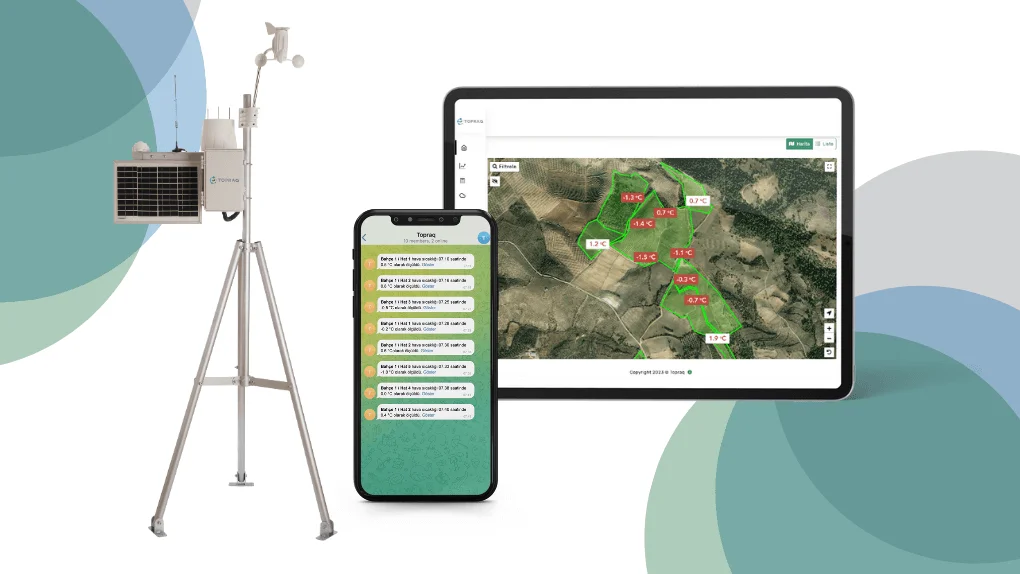Agricultural frost is a weather event that occurs when air temperatures drop below 0°C (32°F), causing damage to crops. During such events, the water inside plant cells freezes, disrupting cell structure. As a result, plant growth stops, leaves and fruits are damaged, and in severe cases, plants may die.
Although agricultural frost is more commonly observed in spring and autumn, it can also negatively affect agricultural production in certain regions during the winter months.
Effects of Agricultural Frost on Plants
The extent of frost damage varies depending on the plant species and its growth stage. To develop effective frost protection methods, it’s essential to understand its impact on crops:
- If frost occurs during flowering, fruit formation can be significantly reduced.
- Frost close to harvest can lower product quality and market value.
- Young shoots and leaves may be damaged, hindering the plant’s development.
Which Crops are More Vulnerable to Frost?
Some plants are more sensitive to low temperatures, while others are more resistant. The crops most affected by agricultural frost include:
Fruit Trees
- Apple, peach, apricot, plum, cherry, pear: These species bloom early, making them highly susceptible to spring frosts.
- Citrus fruits (orange, mandarin, lemon, grapefruit): Frost events in winter can cause severe damage in citrus orchards.
Vegetables
- Tomato, pepper, eggplant, beans, cucumber, squash: These are frost-sensitive vegetables that can suffer rapid damage below 0°C.
- Cabbage, broccoli, spinach, lettuce: These are relatively frost-tolerant but may be harmed under prolonged cold conditions.
Field Crops
- Corn, cotton, sunflower: Warm-season crops, highly sensitive to cold.
- Wheat, barley, rye: More frost-tolerant but extreme frosts can still hinder growth.
At What Temperature Does Agricultural Frost Occur?
Agricultural frost occurs when the temperature drops below 0°C (32°F), leading to varying levels of damage to crops. The risk increases especially in spring and autumn due to sudden temperature drops. Farmers should closely monitor weather forecasts and utilize early warning systems during these periods.
Types of Agricultural Frost
Understanding the severity and formation of frost is crucial for effective frost protection. Frost events are generally categorized by temperature:
- Light Frost (0°C to -2.2°C): May harm sensitive vegetables and flowering fruit trees.
- Moderate Frost (-2.2°C to -4.4°C): Young shoots, flowers, and leaves are severely affected.
- Severe Frost (-4.4°C and below): Even tree trunks and roots may suffer damage, making losses inevitable in high-risk areas.
In Which Seasons Does Agricultural Frost Occur?
Frost events are more frequent during specific times of the year depending on the country’s geographical position.Farmers must take protective measures tailored to their local climate to reduce potential losses.
How to Protect Against Agricultural Frost?
Farmers can minimize frost damage through various frost protection techniques:
- Monitor daily frost forecasts from official meteorological sources.
- Cover sensitive plants with frost cloths or plastic films to preserve warmth.
- Irrigate soil before expected frost to slow down temperature drops.
- Use wind machines or orchard heaters in large-scale farms to circulate warm air and reduce frost severity.
Combatting Agricultural Frost with Technology
To effectively manage frost events, advanced technologies such as early warning systems, precision climate monitoring, and smart irrigation are vital. With modern agricultural solutions, farmers can anticipate frost risks and take timely action to reduce yield losses.
Early Warning Against Frost with T-Weather

Timely intervention is crucial during frost events. The T-Weather Agricultural Station, equipped with advanced sensors, continuously monitors air temperature and notifies farmers instantly with low-temperature alerts. This allows for preemptive measures before frost causes damage.
Additionally, 15-day localized weather forecasts help farmers plan irrigation and other operations more efficiently by anticipating weather conditions in advance.

